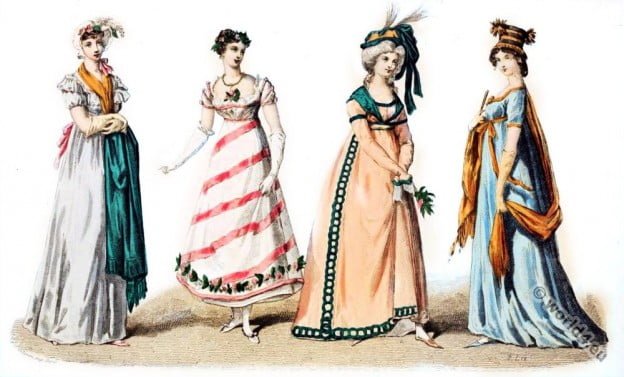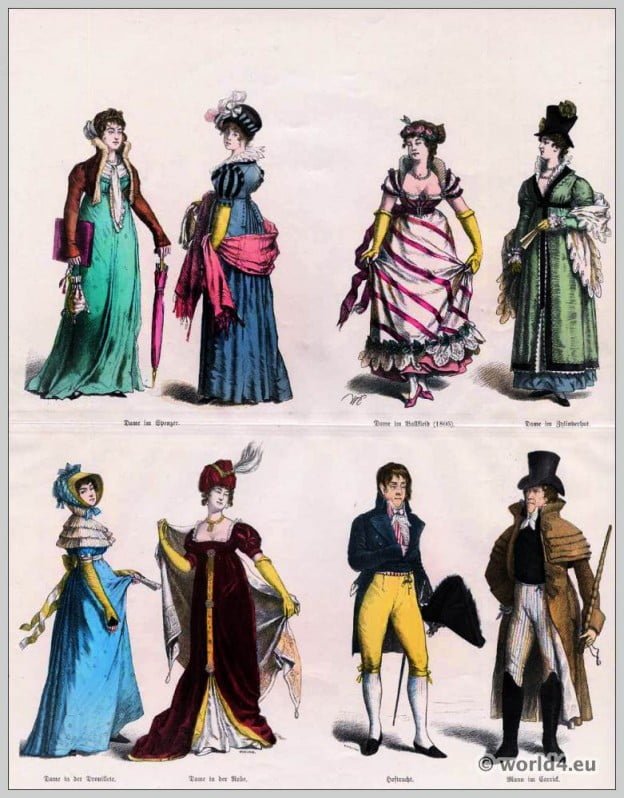The travelling Barge, of the Mandarin Van-tazhin, who attended the Embassy.
Category: 1805
Costumes and shawls. French directorate, consulate and first Empire.
Costumes and scarves in the 18th and 19th century. The fashion of classicism during the French directorate, consulate and first empire.
The fashion masters. Paris in transition from Directoire to Empire.
France. The fashion of the dandies from 1801 to 1805. Paris in transition from Directoire to Empire.
Fashion history. Reign of Napoleon I. 1804 to 1814.
Fashions under the First Empire. Reign of Napoleon I. 1804 to 1814.
First Empire. German Biedermeier. Women in spencer. Man in Carrick.
Coachman coat. The actor David Garrick let himself customize this jacket in the 18th century as the first





